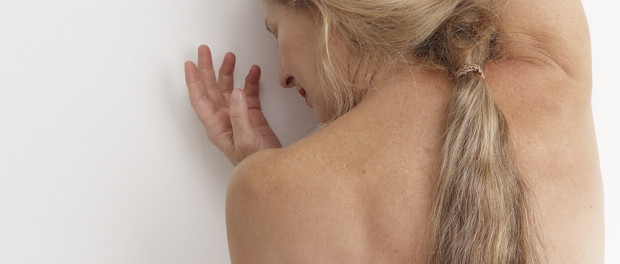Review: Margie Gillis at Agora de la Danse showcases some of her best works in Florilège
Florilège, or Anthology, is a celebration of Margie Gillis’ 40 years as a dancer with enigmatic pieces that have been part of her repertoire since she was in her early twenties. The beauty of seeing her on stage, revisiting works that were created by a younger, hungrier self, is how she reinterprets them like discovering long-lost journal entries. She “reads” them and lingers on their message; the audience is moved by how meaningful they still are to her.
Lyrics only add to the power of Gillis’ movement, and she doesn’t keep the audience at a distance. Florilège opens with “Waltzing Matilda,” in which Tom Waits’ circa 1970’s voice combines with the intimacy of Gillis alone, softly lit yet exposed in a simple, floral dress. During this piece particularly, she invites the audience in. Her persona is almost approachable, but her cries and grunts of effort while hashing out the dance in anguished steps offer up something personal and mysterious.
Speaking to the audience from backstage, Gillis opened up in French about what each piece meant to her. Of “Little Animal” from 1986, she recalled that it was one of the first pieces that focused on gesture before it became common in modern dance. Watching her body twist into the shape of a small, struggling animal under red light became poignant after she described an encounter she’d had with a fragile creature. The shapes she created onstage were hardly repetitive and when her animal finally stood upright, having traveled from one end of the stage to the other, the poignancy gave way to compassionate relief and cheers from the audience.
“Broken English” would have been interesting to see Gillis perform when she was 27, if only for a bit more context to the frenetic pace of her arm movements and a clearer sense of the rage inhabiting it. Gillis dances to Marianne Faithfull in a narrow spotlight that conveys a feeling of being trapped, as her arms eventually tire of fighting against something so futile. She said that the piece was inspired by the Vietnam War and its strongest opponents taking on the same aggressive energy as its supporters, leading to pointless escalation.
The last two pieces of the evening, “Bloom” and “Voyage”, were more interpretive along the lines of poetry and the rhythms of language. A spoken-word recording of Ulysses provided the backdrop for Gillis to become a narrator of sorts in “Bloom”. She shifts in short bursts from head, neck, shoulders to hands, in tune to the steady stream of words. And then she stops, a full-stop on the exalted word “Yes!”
In “Voyage”, set to French lyrics by Gilles Vigneault, Gillis appears in a long, black dress complete with a stiff blazer, black hat, and two worn down suitcases. The lighting, by Pierre Lavoie, is instrumental in setting up the emotional tone for Gillis to drift from one phase of the dance to another, uninterrupted for 30 minutes. Considering the athleticism required of her choreography, from balancing on suitcases to deep stretches with her legs suspended in the air, it’s little wonder that Gillis remains at the top of her field with solo work that shines with the nuances of what she can do four decades later.
Margie Gillis Dance Foundation presents Florilège February 26, 27, 28 at 8 p.m. and March 1 at 4 p.m. at Agora de la Danse (840, Cherrier).









